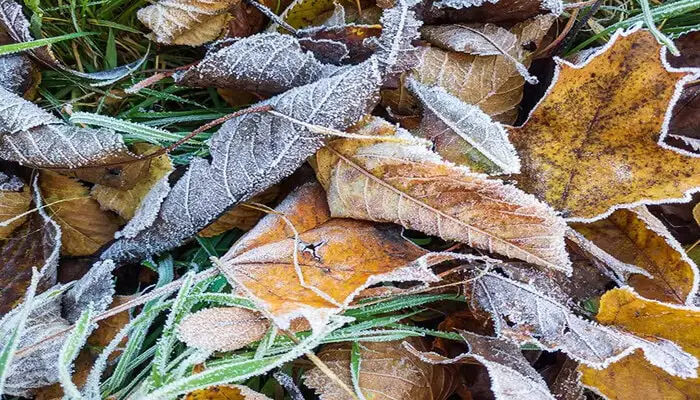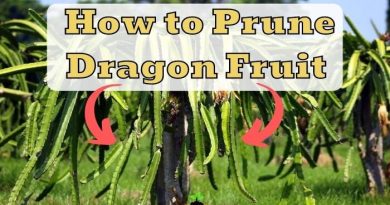Laurel Leaves Turning Brown? 5 Expert Reasons Reveled
I love to watch my laurel tree(Laurus nobilis) grow and I cannot wait to harvest some of its leaves, so, imagine my disappointment when I discovered that my beautiful laurel leaves were turning brown. After some research and consultation with gardening experts, I learned that there are several reasons why laurel leaves may turn brown.
And in this blog post, I will share my findings and provide tips on how to prevent and treat brown leaves on your laurel plants.
Laurel leaves are turning brown for the following reasons: over-watering, under-watering, frost damage, pests, or over-fertilization. Improper care, such as inadequate watering or soil drainage, can lead to browning of leaves. Pests such as scale insects and mealybugs can also cause browning and leaf drops. Environmental factors such as frost or sudden changes in temperature can also contribute to browning of laurel leaves.
| Why Laurel Leaves are Turning Brown: |
|---|
| 1. Incorrect Watering |
| 2. Frost Damage |
| 3. Over-fertilization |
| 4. Pruning Mistakes |
| 5. Pest Infestation |
1. Incorrect Watering
The first reason why laurel leaves are turning brown is incorrect watering, because the laurel tree doesn’t like too wet or too dry soil. Prolonged drought in particular causes problems for the plant.
Lack of water
Drought damage is often the main cause of brown leaves on bay laurel, not only in summer, but especially in winter. Contrary to expectations, it often has nothing to do with the cold when parts of the plant turn brown, but with a lack of water.
Since the ground can freeze at temperatures below zero, the laurel is not able to absorb moisture. It does not need severe frosts for this, even long periods just below freezing point are enough to make a water supply impossible.
Well-established laurel trees can cope with a certain amount of drought, but these phases should not last too long. Bay laurel should be supplied with sufficient water, especially on hot summer days, otherwise a protective mechanism comes into effect that ensures that the outer shoots are no longer supplied with water so that the plant can survive as a whole.
The undersupplied shoots then turn brown and eventually die. Even in winter, drought is very often the cause of brown leaves on the evergreen laurel trees. Because even with slight ground frosts, it is no longer able to absorb moisture.
The non-hardy plant should therefore definitely overwinter indoors and be watered regularly.
Waterlogging
But the laurel tree also reacts to waterlogging by turning leaves brown. This usually happens when the laurel tree is in a planter from which the water cannot drain, or when it is watered too often and too much.
Especially when the laurel is overwintered in cool winter quarters, it does not need so much water. The substrate should always be slightly damp, but it is usually sufficient to water it once a week.
If the laurel leaves turn brown in winter, this is usually a sign of too much water. In the winter quarters (around 41 degrees Fahrenheit), the laurel tree does not have a particularly high moisture requirement. Watering only once per week is usually sufficient.
Treatment
So if the laurel leaves turn brown, you should first check whether the substrate is too dry or too moist and, if necessary, remedy the situation.
In case of drought, it helps to water the plant sufficiently and regularly. When wet, it should be taken out of the pot and as much substrate removed as possible.
Then, already rotted and dead roots are cut out and the plant is dried on old newspapers for a while before it is placed in new substrate. The pot or tub should definitely have a drainage layer so that excess water can run off.
When repotting, make sure that you immediately fill in a thick layer of drainage material so that the laurel tree does not get too wet again in the future. The substrate should have a very high proportion of sand.
Citrus potting soil, substrates for Mediterranean plants, high-quality potting soil or a mixture of 30% sand, loam and some humus-rich soil for green plants are best.
2. Frost Damage

Signs of frost damage on laurel:
- Browning or blackening of the laurel leaves or tips.
- Wilting or curling of the leaves.
Exposure to extreme weather conditions, such as cold temperatures, can cause the laurel leaves to turn brown. Since laurel is not sufficiently frost hardy, it should move to its cool and bright winter quarters before the first frost, which usually occur around November.
If the bay laurel tree is brought in too late or if it even stays outside completely, frost damage can occur, which can be recognized by the brown, dried-up leaves.
Temperatures of 40-50 °F (5-10 °C) are ideal. If the laurel branches and trunk are also brown and dry on the inside, any help for the plant will come too late.
If only the laurel leaves are brown, pruning would help( dry shoots must also be removed). The plant must then be repotted and overwintered in a suitable pot.
The potting soil should be well drained and slightly humus-rich citrus soil.
Treatment
If your laurel shrub has suffered from freezing or drying and has a withered appearance, don’t worry, it can be nursed back to health if you follow these steps:
- Trim back all the dry shoots of the plant.
- If only the leaves are brown, a slight pruning is sufficient.
- Pruning should be done between March and April on a dry day.
- After pruning, make sure to water it.
- For severe damage, stronger measures are necessary.
- In the case of severe winter damage, almost complete pruning is required, which will halt flowering for a year.
- Pruning should be done before summer but after the ice saints.
- By autumn, the hedge will have recovered and will sprout again, resulting in a dense overall appearance.
3. Over-fertilization
Another reason for the brown leaves on the laurel tree can be over-fertilization. Since the laurel cannot cope with too high salt concentrations in the substrate, larger amounts of liquid fertilizer are not suitable for supplying nutrients. It is better to use an organic long-term fertilizer.
If the root ball is already heavily rooted and you cannot remove the soil completely, you can help to place the laurel root ball in a bucket or tub with fresh (room-warm) water.
The salts are generally very soluble in water and can be washed out. Leave the laurel in the water for about five minutes, lifting the root ball occasionally to ensure better mixing.
Then drain the roots well. This procedure is repeated about three times in order to dissolve any remaining solid components of the excess fertilizer. Then the laurel can be potted in fresh substrate.
Treatment
Blue grain, high amounts of liquid fertilizer and the like lead to the death of the leaves and shoots in a very short time.
If this is the case, laurel leaves can still be saved if you act quickly:
- Remove any brown or dried leaves and shoots.
- Get the plant out of the pot and remove as much substrate as possible by hand.
- Flush out the remaining soil using the garden hose nozzle.
- Let the roots dry for a few hours.
- Refill the substrate with high quality soil that is low in lime content.
- Water lightly.
- Avoid using fertilizers for at least two months.
4. Pruning Mistakes
A laurel tree should be pruned once or twice a year. If the wrong time is chosen or if the laurel leaves are injured, this will lead to an unsightly brown discoloration.
Brown leaf edges often appear a few days after a cut. The laurel reacts to an injury to the leaves by drying out at the cutting points. In principle, this does not pose a threat to the health of the plant, it just doesn’t look particularly nice.
Treatment
In order to repair the damage, you should not cut off these brown leaves, because this will only result in the underlying tissue dying off again.
When cutting your laurel hedge, it’s important to follow these renewed measures:
- Avoid cutting through the leaves of the plant.
- Cut just above a leaf base every time.
- Trim all affected shoots in this manner.
5. Pest Infestation
In addition to the above-mentioned weather-related damage and care errors, the laurel tree is also occasionally a victim of pest attacks, which mainly occur in warm winter quarters.
Although the bay laurel tree is relatively disease and pest resistant due to its thick, leathery leaves, it can occasionally suffer from pest or fungal infestations, as well as diseases such as root rot, which cause the leaves to turn brown.
| Pest Name | How it Affects Laurel Leaves | Control Methods |
|---|---|---|
| Scale Insects | Attaches to the leaves and sucks out the sap, causing brown patches on the leaves. | Prune off affected leaves and apply insecticidal soap or horticultural oil. |
| Spider Mites | Spins webs on the leaves and sucks out the plant’s fluids, causing leaves to turn brown and fall off. | Hose off the leaves with water or apply insecticidal soap. |
| Mealybugs | Feeds on the sap of the leaves, causing brown spots to appear. | Apply insecticidal soap or horticultural oil to the leaves. |
| Vine Weevil | Larvae feed on the roots, causing the plant to weaken and leaves to turn brown. | Apply nematodes to the soil or use a chemical insecticide containing thiacloprid. |
Scale Insects
Symptoms:
- Brown leaves;
- Formation of honeydew and sooty mold;
Scale insects are among the parasites that feed on plant juices. To do this, they suck out the cells, mainly soft and young tissue. That alone already severely weakens the sweet bay tree.
On top of that, these insects also release toxins that lead to leaf discoloration and tissue death. Scale insects have an oval or round, light to dark brown shield. They are found on fresh laurel, non-woody stems and leaves.
Treatment
In the event of a scale insect infestation in bay laurel tree, it is crucial to isolate the plant from other plants to prevent the insects from spreading.
Treatment is more manageable for laurel shrubs that were already moved to their summer quarters outdoors compared to those in winter quarters.
To address the problem, cut out diseased shoots, and use a cotton swab soaked in alcohol to dab scale insects.
Wash the entire plant with a warm, soft soap solution (1 liter of water plus 1 tablespoon of soft soap) and spray it with a mixture of paraffin and rapeseed oil. Alternatively, neem oil can also be used.
Repeat the process after 10 to 14 days to address the next generation of pests. Ladybugs and parasitic wasps are natural enemies that can be used to control the infestation. Watering with nettle manure can also help.
Spray fresh laurel shoots with a mixture of paraffin and rapeseed oil and place potted laurel in a clear plastic bag and put them in the shade for two weeks.
Mealybugs
Symptoms:
- Leaves curl up and turn brown;
- Infestation usually begins in the leaf axils;
- A white, cotton-like web can be seen on shoots and leaves;
- Sticky honeydew drops form laurel leaves;
Mealybugs are closely related to scale insects. Instead of the typical shields, however, these parasites protect themselves with wax, which they produce in special glands.
Usually mealybugs are difficult to recognize on the laurel tree( a fine, whitish web is characteristic of an infestation with mealybugs). These threads of wax cover these pests and protect them from drying out and the sun. Unfortunately, also against most sprays.
Mealybugs excrete large amounts of honeydew and are therefore protected by ants against natural enemies in the wild. Citrus mealybugs are common in potted plants. The lice suck on the laurel leaves and at the same time excrete toxins.
Treatment
To prevent the spread of pests, the initial step is to separate the infected laurel from other plants.
Generously remove the diseased parts of the plant, and wash the entire plant with a soft soap solution (1 tablespoon of soft soap per liter of water).
Spray the plant with paraffin oil and place it in a shady, transparent bag for two weeks.
Ensure that the plant remains cooler in the winter quarters. Alternatively, during good weather, potted plants can be placed outside.
Natural enemies of pests, such as ladybugs, lacewing larvae, parasitic wasps, and hoverflies, can also be used as a control method.
Vine Weevil
Brown leaves with eating damage usually indicate an infestation by the vine weevil. This is a parasite that explicitly affects the laurel bush. The traces appear on the edge of the leaf and on the tips.
This pest occurs most frequently between the months of April and May and August and September. The damage is not life-threatening, only the larvae it deposits can disturb the root system.
Treatment
Use nematodes (roundworms) to control the infestation.
Add the nematodes to water and water the affected laurel leaves thoroughly.
The vine weevil will perish due to bacterial transmission.
How to Prevent Brown Leaves on Laurel
Here are some tips on how to prevent brown leaves on your laurel:
1)Adequate Watering
You need to water the plant sufficiently as soon as the soil dries out on the surface. This applies not only to summer, but also to winter. Therefore, water in winter on frost-free days and shade young laurel specimens with a veil.
Water the plant thoroughly when the top layer of soil is dry. Avoid waterlogging by placing a drainage layer and loosening the soil well at planting time.
2)Proper pruning
Prune before new growth appears in February or immediately after flowering. To avoid unsightly brown edges, use hand scissors rather than electric scissors.
3)Adequate Fertilizing
In case of signs of deficiency, fertilize with a readily available fertilizer. You must also adapt the annual fertilization. If you usually only fertilize once a year, switch to bi-annual fertilization. Also check the pH of the soil and lower it if necessary. This fact alone can allow your bay leaf to absorb enough iron again.
Depending on the weather, bay laurel and other evergreen trees do not sprout until mid-April.
Fertilize for the last time no later than June. In late summer, you should only fertilize with potash to make your bay tree more frost tolerant.
4)Soil
If the soil is heavily compacted, the plant is dug up and half the soil is loosened with sand. Otherwise, just loosen the soil in the root zone with a pitchfork. However, you must always be very careful not to damage the roots.
To facilitate the removal of limestone from the soil, the soil is loosened and sand is added to it. If this is not enough, the whole soil must be replaced. Mulching with acidic pine needle compost also helps to lower the pH of the soil again.
If the container is too small for your bay tree, the only thing to do is repot it in a larger container.
Frequently Asked Questions
If your bay leaves are turning brown, it’s best to avoid using them for culinary purposes. Brown leaves may indicate disease or pest problems that could make the leaves unsafe to consume.
It is normal for some laurel leaves to turn brown and fall off in the autumn. However, if the browning is excessive or occurs at other times of the year, it could be a sign of a problem.
If your laurel plant is suffering from brown leaves, it may not be too late to save it. Depending on the cause of the browning, you may need to adjust watering, improve soil drainage, prune diseased branches, or treat pests with insecticides.
In some cases, brown leaves on laurel plants can be saved by addressing the underlying cause. This may involve pruning affected areas, adjusting watering and fertilization practices, and treating for pests or disease. However, severe damage may require complete removal of the plant.




